Friends of Padre Steve’s World
A couple of days ago I reposted an article about the sinking of the HMS Hood by the German Battleship Bismarck. The story of the Bismarck is an epic saga of naval warfare and history. It is tragedy played out as if scripted by a playwright in three parts. The first was the sinking of the illustrious “Mighty” Hood by the Bismarck on May 24th 1941.
The second, which I deal with today, was the pursuit and search for Bismarck by the British Home Fleet and the desperate attempt of the British to find a way, any way, to slow Bismarck down and bring her to battle, before she could return to the safety of Nazi occupied France. The final chance to stop the mighty German Leviathan came as night fell on May 26th.
I hope you appreciate the heroism of the men who flew the hopelessly obsolete aircraft who dealt the blow which crippled Bismarck. This is a re-write of past articles and I will post the final article about the sinking of the Bismarck tomorrow.
There is one other thing to mention. I cannot imagine what it would have been to be a crewman on the Bismarck, knowing that nightfall would bring them safely unter the protection of the Luftwaffe, and then discover that there was no escape from death and destruction.
Peace
Padre Steve
On May 24th 1941 the German Battleship Bismarck had sunk the celebrated Battlecruiser HMS Hood in the Denmark Strait and had seriously damaged the new Battleship HMS Prince of Wales. The news of the disaster stunned the Royal Navy. Fighting a war on multiple fronts and now standing alone against Hitler’s Germany the British deployed every warship available to find and sink Bismarck.
On the evening of the 24th of May Bismarck was being shadowed by the heavy cruisers HMS Norfolk and HMS Suffolk. To the east the ships of the Home Fleet, Britain’s last line of defense under the command Admiral John Tovey was making the fastest speed to intercept the Bismarck. Far to the southeast, Vice Admiral James Sommerville’s “Force H” comprised of the carrier HMS Ark Royal, the fast but elderly battlecruiser HMS Renown, and the light cruiser HMS Sheffield were ordered to leave the vital convoy which there were escorting and proceed to the northwest to join the hunt for the German battleship.
The Admiralty knew that the disaster could not be covered up, and within three hours of the battle sent out a press release detailing the situation: “British naval forces intercepted early this morning, off the coast of Greenland, German naval forces, including the battleship Bismarck.
The enemy were attacked, and during the ensuing action H.M.S. Hood (Captain R. Kerr, C.B.E., R.N.) wearing the flag of Vice-Admiral L. F. Holland, C.B., received an unlucky hit in the magazine and blew up. The Bismarckhas received damage, and the pursuit of the enemy continues. It is feared there will be few survivors from H.M.S. Hood.
HMS Ark Royal with Swordfish in 1939
With Bismarck loose the North Atlantic Convoys on which Britain depended for her survival were vulnerable. The previous year the commander of the Bismarck task force Admiral Günther Lütjens with the Battlecruisers Scharnhorst and Gneisenau had wreaked havoc on the convoys. Now of Britain was on edge with the news of Bismarck’s break out into the Atlantic. Churchill was furious with the Navy when the Mighty Hood, the largest and most powerful ship in the Royal Navy destroyed with the loss of all but three crew members. Now every effort was directed to find and sink the Bismarck.
Swiftly ships were redeployed to find, sink, and prevent Bismarck intercepting and destroying any of the eleven convoys then at sea. HMS Rodney and the Sixth Destroyer Flotilla made up the Tribal Class Destroyers Somali, Tartar, Mashona, and Eskimo, was west of Ireland escorting the passenger liner RMS Britannic which was serving as a troopship even as Rodney made her way to Boston for a major refit, including her notoriously unreliable engineering plant. Leaving the Eskimo behind to escort, Rodney and the other three destroyers steamed to join Tovey and King George V. Likewise, HMS Ramillies was detached from Convoy HX-127 South of Cape Farewell, to intercept Bismarck from the west, and her sister ship HMS Revenge was dispatched from Halifax, Nova Scotia with the same mission. The elderly Ramillies and Revenge would have have stood little chance in an engagement with Bismarck, but they were better than nothing.
Bismarck photographed from a Swordfish from 824 Squadron
Accompanying the Home Fleet was the brand new Aircraft Carrier HMS Victorious with 824 Naval Air Squadron embarked under the command of LCDR Eugene Esmond. The squadron, like many in the Fleet Air Arm was equipped with Fairey Swordfish Torpedo Bombers. The squadron had seen action aboard other carriers in the North Atlantic, the Norway Campaign and in the Mediterranean before being assigned to the Victorious. On the night of 24 May 1941, in foul North Atlantic weather the Victorious launched nine Swordfish from a range of 120 miles in a desperate attempt to slow the Bismarck down. Esmond’s squadron scored one hit amidships on the Bismarck which did no damage except to scratch and dent the armor plate of Bismarck’s main belt.
824 Squadron Swordfish on HMS Victorious
About 6 hours after the attack by Victorious’s Swordfish, Bismarck shook her pursuers and disappeared into the mists of the North Atlantic, while her consort, the Heavy Cruiser Prinz Eugen escaped to the northwest in order to conduct independent raiding operations. Not knowing the location or course of the Bismarck the Royal Navy frantically searched for the German Leviathan. Most of the ships nearest to Bismarck’s last reported position, like Victorious and Repulse were low on fuel, others like Prince of Wales damaged, and others, like Force H seemed too far away to be of any importance in the search.
However the British were able to intercept and decode some German communications which indicated that Lütjens had orders to steam to Brest, in German occupied France for repairs. Brest had good repair facilities and both Scharnhorst and Gneisenau were undergoing repairs there. However, as far as the British knew, Lütjens might have doubled back through the Denmark Strait to Norway.
Though the British believed that the Bismarck could be headed toward Brest they could not be sure, as each hour passed the chances of finding and bringing Bismarck to battle diminished. For nearly 36 hours the British searched in vain for the Bismarck, and for much of the 25th Tovey’s squadron was searching in the wrong direction.
For over 30 hours the British had no idea where Bismarck was or might be heading. Winston Churchill was livid. He was angry at the loss of Hood and Bismarck’s evasion of ships shadowing her. Then at 1030 on the 26th of May the luck of the British changed.
After breaking clear of Prince of Wales, Norfolk, and Suffolk, the crew of the Bismarck believed with every hour that they would soon Be safe. They expected that by the morning of the 27th they would under the protection of Herman Goering’s Luftwaffe and safely in France. But, the good fortune of the British was the worst thing that could happen to the 2200 men aboard Bismarck.
On that morning a Royal Air Force Coastal Command PBY Catalina co-piloted by US Navy Ensign Leonard Smith found the Bismarck. The aircraft was holed by anti-aircraft fire, but sent out the following message:
One battleship, bearing 240º, distance 5 miles, course 150º. My position 49º 33′ North, 21º 47′ West. Time of transmission 1030/26.”
Once Smith transmitted Bismarck’s location every available ship converged on her location, but unless something could be done to slow the Bismarck down, the chances bringing her to battle diminished by the hour.
The only heavy forces close enough to successfully engage Bismarck, Tovey’s battleships HMS King George V and HMS Rodney were over 120 miles behind Bismarck, too far away to intervene unless Bismarck changed course or could be slowed down. Ramillies and Revenge were far to the west and too slow to intercept.
This left Somerville’s Force H to the south, but it did not have the combat power to survive a surface engagement with the Bismarck should they encounter her without the support of other heavy fleet units. Even so Sommerville was willing to risk the Renown in a suicidal action to bring Bismarck to battle if it would allow Tovey to catch her before she could escape. Desperation was the order of the day for both sides.
820 Squadron Swordfish returning to Ark Royal after the attack on Bismarck
The situation was desperate. If Bismarck could not be slowed down before dark she would be in range of heavy Luftwaffe Air support as well as support from U-Boats and destroyers based in France. Unless something akin to a miracle occurred Bismarck, would join the Scharnhorst and Gneisenau in Brest and with the addition of Bismarck’s sister-ship Tirpitz form a surface squadron strong enough to devastate British shipping in the Atlantic.
Ark Royal’s aircraft were the last hope of slowing down Bismarck before she could effect her escape and emerge from the Atlantic after having dealt the Royal Navy a devastating blow.
The strike aircraft available on Ark Royal were the most unlikely aircraft imaginable to successfully carry out such a mission. Ark Royal’s 820 Squadron, like Victorious’ 825 Squadron it was equipped with Fairey Swordfish Mk 1 Torpedo Bombers. These were biplanes with their crew compartment exposed to the weather.
The Swordfish entered service to the Navy in 1936. By all standards these aircraft were antique compared with most aircraft of its day. Likewise, the Mark XII 18” torpedo carried by the aircraft was smaller or slower and equipped with a less powerful warhead than comparable torpedoes used by other navies. Despite their limitations the venerable Swordfish had performed admirably during the early part of the war sinking or damaging three Italian battleships at Taranto in November 1940. Their success against the Italians at Taranto gave inspiration to the Japanese for their attack against the U.S. Pacific Fleet at Pearl Harbor the following year. But now, in the face of foul weather and a powerful opponent 820 Squadron’s Swordfish were all the Royal Navy had left to stop Bismarck before she could make her escape.
Bismarck steering erratically after the torpedo hit to her stern
With that in mind Sommerville in sent his light cruiser, the HMS Sheffield ahead to shadow Bismarck while Ark Royal closed in to launch her Swordfish against the German ship. The first wave of aircraft strike were unaware Sheffield was near Bismarck mistakenly attacked the British cruiser. Thankfully, the new design magnetic detonators On the torpedoes failed to detonate, saving Sheffield from destruction. With little daylight left the aircraft returned to Ark Royal where they rearmed with torpedoes equipped with contact fuzes and refueled by the flight deck crew, that labored in rain and 50 knot winds blowing across the carrier’s flight deck. Just before 8 p.m. 15 Swordfish of 820 Squadron took off for what they knew was the very last chance to attack Bismarck before night fell. If they failed Bismarck would most certainly escape.
As darkness began to fall the 15 Swordfish from 820 Squadron descended through the clouds to attack the German ship. Just fifteen obsolete aircraft and thirty men were attacking the most powerful warship afloat. They dispersed and attacked from all points of the compass. Bismarck twisted and turned and fired all of her guns at the attacking aircraft. The Germans fired with every weapon available, even the 15″ guns of her main battery, which she fired her into the ocean ahead of the Swordfish. It appeared for a moment that Bismarck had successfully avoided serious damage. All but two torpedoes missed. One torpedo struck the German midships and barely dented her massive armor. However a second torpedo, launched by a Swordfish piloted by Lieutenant John Moffat hit Bismarck in her weakly protected stern. The target angle from the aircraft to Bismarck was poor and those aboard the battleship who saw the torpedo approach believed that it was certain to miss, but it hit.
The hit jammed Bismarck’s port rudder at a 12 degree angle, and destroyed her steering gear. Repair crews and divers were dispatched but the weather was such that German damage control teams could not repair her steering gear. This was mainly due to the most critical design flaw in the class and most other German Capital Ships, and Heavy Cruisers. The structure of the stern was inherently weak. Likewise, the design of the ship’s propulsion system used a three screw system with dual rudders. This was designed to save weight when most other capital ships used a four screw arrangement. The steering gear were hopelessly jammed and the three screw arrangement did not give Bismarck the ability to steer herself and main control just using her screws. The game was now over, except for the final engagement. Escape was now impossible.
After the hit Bismarck steamed in circles, unable to maneuver. This enabled Tovey with King George V, Rodney, the heavy cruisers Norfolk and Dorchester, as well as a number of destroyers to catch up with the hitherto elusive German battleship.
Bismarck’s senior surviving Engineering Officer, Korvettenkapitänen Gerhard Junack recalled the damage and attempts to restore maneuverability to the stricken ship:
-
-
- “
One torpedo which hit amidships caused no damage, but the second affected the rudders disastrously, jamming the port-side rudder at a 15º angle. Immediately, the Bismarck became no longer manoeuvrable.
-
- The torpedo-hit on the rudder shook the ship so badly that even in my zone of action in the turbine-room, the deck-plates were thrown into the air, and the hull vibrated violently. Shortly after the blow, water flooded through the port-side gangways into the turbine-room, and clouds of gas and smoke filled the room until the forced ventilation cleared it.
- The stern compartments of the ship were now flooding, but the men who had been stationed there could still be saved, and soon the carpenters and repair-crew came through, making their way aft. But the ship pitched so violently in the strong sea swell that it was impossible to keep a foothold in the turbulent water surging through the companion-way.
- All possibilities were now being considered to restore the ship’s manoeuvrability – even if only temporarily. The Commander, Kapitän zur See Lindemann, considered reports from Chief Engineer Lehmann, who was in continual contact with the repair and rescue teams. There was much gesticulation, and at one point the Chief Engineer stepped out of the circle, walked away, turned about, and made a sign of complete refusal. What this was about I am not certain, but eventually it was found possible to connect the hand rudder. But the old rudder would not budge, and to attempt to cut it away with underwater saws was quite impossible because of the heavy swell. A proposal to force the rudder out from below with the help of explosives was rejected, because of the proximity to the propellers. Thus all experiments with the auxiliary rudder were given up as completely hopeless, with the old one immovable.”
The attacks of the antiquated Swordfish on the Bismarck achieved results that no one in the Royal Navy expected. When reports indicated that Bismarck had reversed course following the torpedo attack Tovey could not believe them. It was only when lookouts aboard Sheffield confirmed the reports from the Swordfish about Bismarck’s erratic movements that Tovey realized that Bismarck must have been damaged and was unable to maneuver.
It was a dramatic and unexpected turn of events. The German crew sank into gloom as the night went on and they dealt with torpedo attacks from the British Destroyers as Tovey’s battleships moved in for the kill. As darkness descended the destroyers of Captain Phillip Vians’s 4th Flotilla, the Tribal Class destroyers Cossack, Maori, Zulu, Sikh and the Free Polish Navy destroyer Piorun, closed with Bismarck subjecting her to a Lilliputian torture. The ships harassed and attacked the German ship with guns and torpedoes. Though their attacks did not succeed they kept the bulk of the Bismarck’s crew up and awake all night. They launched 16 torpedoes without a hit, but a star shell landed on Bismarck’s bow forcing damage control teams to race to the forecastle to extinguish the flames in order to prevent heavier ships nearby from shooting at her. As daylight arrived, Admiral Lütjens, his staff, and Bismarck’s Captain and watch standers prepared the ship for the inevitable confrontation with the British battleships and heavy cruisers.
Until tomorrow,
Peace,
Padre Steve+




























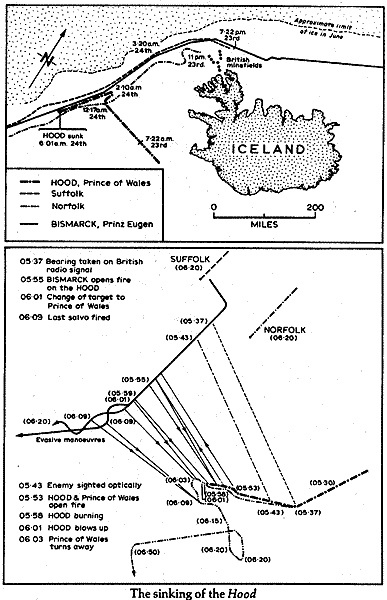
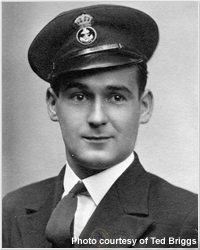
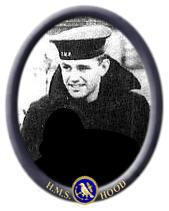
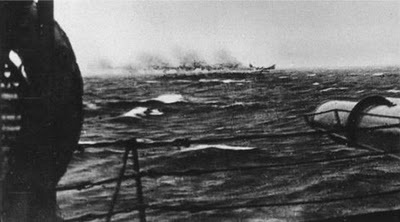








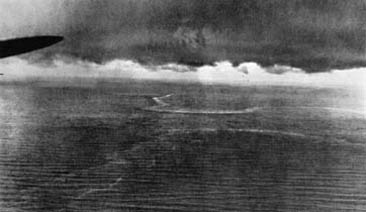
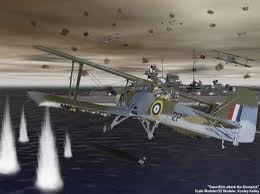
















 USS Pensacola
USS Pensacola HMS Exeter
HMS Exeter USS Houston with President Roosevelt Aboard
USS Houston with President Roosevelt Aboard Prinz Eugen
Prinz Eugen HMS Suffolk
HMS Suffolk USS San Fransisco Returning After the Naval Battle of Guadalcanal
USS San Fransisco Returning After the Naval Battle of Guadalcanal